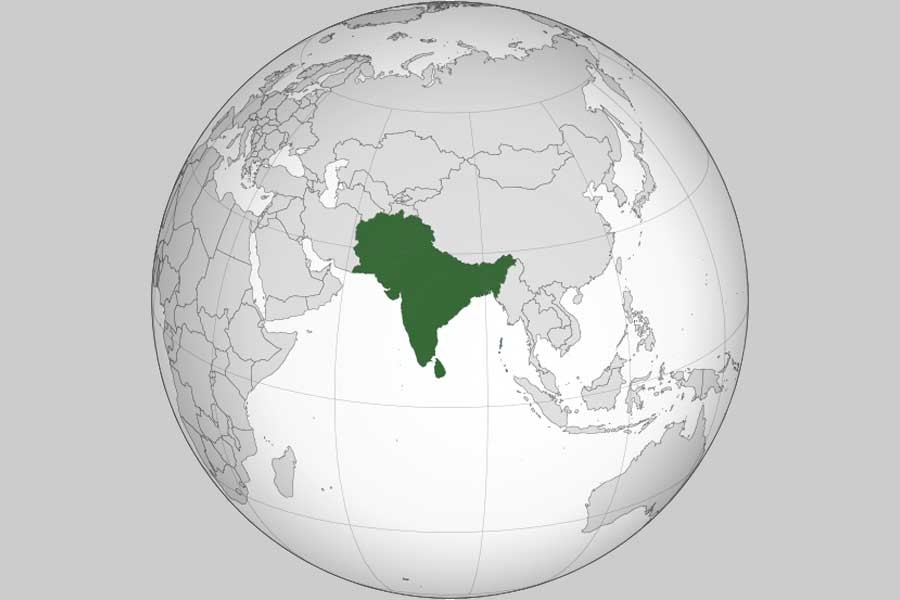The three-day 10th South Asia Economic Summit (SAES X) that took place in Kathmandu in the middle of this month concluded with a mixed feeling as regards advancing the region towards an integrated one. The participants virtually scaled down their hopes for a better integrated South Asia, considering the ground realities. Though most of them didn't explicitly express their disappointment over slow progress of the integration process, they were not quite enthusiastic either. A few of the participants, however, categorically opined that they find little reason to be very hopeful for extended cooperation and greater integration in South Asia.
The Kathmandu-based South Asia Watch on Trade, Economics and Environment (SAWTEE), in association with National Planning Commission and the Ministry of Commerce of the Government of Nepal organised the event. Thus it was a joint initiative where Nepalese government actively participated and some ministers and senior officials of the government also attended the summit. Except Bhutan and Maldives, political and government level representation from the rest of the member countries of South Asian Association for Regional Cooperation (SAARC) was either negligible or absent.
In fact, absence of the political leaders and senior policymakers, especially from the bigger countries, in the summit reflects a lack enthusiasm on the very concept of common or united South Asia. Though the organisers tried their best to bring the economic and trade ministers of the eight SAARC countries, most of them declined to join the event at the last moment. No minister from Afghanistan, Bangladesh, India, Pakistan and Sri Lanka attended the summit. Even senior government officials from these countries didn't attend.
Pointing to the absence of political leaders and policymakers, especially from the bigger countries, Professor Rehman Sobhan in his keynote speech on the last day of the summit lamented saying, "Today the member governments of SAARC, particularly its larger members, appear to have lost faith in the regional entity which brought them together and are looking towards alternative regional grouping both within and beyond South Asia."
The eminent economist, however, mentioned that such move away from SAARC was not an altogether new phenomenon and what is important for the civil society is to be particularly pro-active to keep the idea of South Asia alive. He advised that members of the civil societies need to be engaged meaningfully. He also added that the idea of South Asia could only be kept alive if it remains embedded in their professional concerns and institutional priorities.
There is hardly any space to disagree with Professor Rehman Sobhan's observations and suggestions. A large number of conferences, meetings, studies and researches on regional cooperation, connectivity and integration in South Asia have been conducted. Thus, the problems and prospects of the region are by now well known to all.
Lack of adequate presence from the trade bodies and private sector also created a void in the summit. It is not clear whether the private sector of the region has lost interest in the regional integration process. As private sector is the ultimate driver of trade and economy, thoughts and insights from them is critical.
Unity or common stance of South Asia in any global issue is hardly noticeable. In a working session on 'South Asia Position in Upcoming WTO Ministerial' this writer had the opportunity to interact with eminent experts of the region. Mentioning the divergence of interest of the region's countries in the multilateral trade negotiations, one of them recalled the fifth WTO ministerial conference held in Hong Kong in 2005. It is pretty well known that in that ministerial when Bangladesh pushed the agenda of 100 per cent Duty-Free Quota-Free market access for the Least Developed Countries (LDCs) in the developed countries, three developing countries of South Asia opposed the move in different ways. Pakistan lobbied strongly to block the move and Sri Lanka categorically opposed 100 per cent DFQF for the LDCs. India neither opposed nor supported Bangladesh.
In fact, countries in South Asia are driven by varying trade interests. Most of the time, they are not on a common platform on critical issues due to the differences in their interests. Take the example of the so-called new issues like e-commerce and MSME. Some countries like India have strong reservation to bring these issues in the multilateral trade negotiation under the WTO framework, while Pakistan and Sri Lanka are in favour of initiating negotiation for global trade rules in these areas. Clearly, there is a divided position in South Asia on new issues at the upcoming WTO ministerial scheduled to be held on December 7-10 in Buenos Aires, Argentina.
Nevertheless, the overall mood of the summit was to continue efforts of the civil societies of the region despite a lot of obstacles and barriers.


